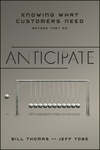Kitabı oku: «Aircraft and Submarines», sayfa 15
The credit for using a submarine boat for the first time in actual warfare belongs to a Yankee, David Bushnell. He was born in Saybrook, Connecticut, and graduated from Yale with the class of 1775. While still in college he was interested in science and as far as his means and opportunities allowed, he devoted a great deal of his time and energy to experimental work. The problem which attracted his special attention was how to explode powder under water, and before very long he succeeded in solving this to his own satisfaction as well as to that of a number of prominent people amongst whom were the Governor of Connecticut and his Council. Bushnell's experiments, of course, fell in the period during which the Revolutionary War was fought, and when he had completed his invention, there naturally presented itself to him a further problem. How could his device be used for the benefit of his country and against the British ships which were then threatening New York City? As a means to this end, Bushnell planned and built a submarine boat which on account of its shape is usually called the Turtle.
General Washington thought very highly of Bushnell, whom he called in a letter to Thomas Jefferson "a man of great mechanical powers, fertile in inventions and master of execution." In regard to Bushnell's submarine boat the same letter, written after its failure, says: "I thought and still think that it was an effort of genius, but that too many things were necessary to be combined to expect much against an enemy who are always on guard."
During the whole period of the building of the Turtle Bushnell was in ill health. Otherwise he would have navigated it on its trial trip himself for he was a man of undoubted courage and wrapped up alike in the merits of his invention and in the possibility of utilizing it to free New York from the constant ignominy of the presence of British ships in its harbour. But his health made this out of the question. Accordingly he taught his brother the method of navigating the craft, but at the moment for action the brother too fell ill. It became necessary to hire an operator. This was by no means easy as volunteers to go below the water in a submarine boat of a type hitherto undreamed of, and to attach an explosive to the hull of a British man-of-war, the sentries upon which were presumably especially vigilant, being in a hostile harbour, was an adventure likely to attract only the most daring and reckless spirits. In a letter to Thomas Jefferson, other portions of which we shall have occasion to quote later, Bushnell refers to this difficulty in finding a suitable operator and tells briefly and with evident chagrin the story of the failure of the attempts made to utilize successfully his submarine:
After various attempts to find an operator to my wish, I sent one who appeared more expert than the rest from New York to a 50-gun ship lying not far from Governor's Island. He went under the ship and attempted to fix the wooden screw into her bottom, but struck, as he supposes, a bar of iron which passes from the rudder hinge, and is spiked under the ship's quarter. Had he moved a few inches, which he might have done without rowing, I have no doubt but he would have found wood where he might have fixed the screw, or if the ship were sheathed with copper he might easily have pierced it; but, not being well skilled in the management of the vessel, in attempting to move to another place he lost the ship. After seeking her in vain for some time, he rowed some distance and rose to the surface of the water, but found daylight had advanced so far that he durst not renew the attempt. He says that he could easily have fastened the magazine under the stem of the ship above water, as he rowed up to the stern and touched it before he descended. Had he fastened it there the explosion of 150 lbs. of powder (the quantity contained in the magazine) must have been fatal to the ship. In his return from the ship to New York he passed near Governor's Island, and thought he was discovered by the enemy on the island. Being in haste to avoid the danger he feared, he cast off the magazine, as he imagined it retarded him in the swell, which was very considerable. After the magazine had been cast off one hour, the time the internal apparatus was set to run, it blew up with great violence.
Afterwards there were two attempts made in Hudson's River, above the city, but they effected nothing. One of them was by the aforementioned person. In going towards the ship he lost sight of her, and went a great distance beyond her. When he at length found her the tide ran so strong that, as he descended under water for the ship's bottom, it swept him away. Soon after this the enemy went up the river and pursued the boat which had the submarine vessel on board and sunk it with their shot. Though I afterwards recovered the vessel, I found it impossible at that time to prosecute the design any farther.
The operator to whom Bushnell had entrusted his submarine boat was a typical Yankee, Ezra Lee of Lyme, Connecticut. His story of the adventure differs but little from that of Bushnell, but it is told with a calm indifference to danger and a seeming lack of any notion of the extraordinary in what he had done that gives an idea of the man. "When I rode under the stern of the ship [the Eagle] I could see the men on deck and hear them talk," he wrote. "I then shut down all the doors, sunk down, and came up under the bottom of the ship."
This means that he hermetically sealed himself inside of a craft, shaped like two upper turtle shells joined together – hence the name of the Turtle. He had entered through the orifice at the top, whence the head of the turtle usually protrudes. This before sinking he had covered and made water-tight by screwing down upon it a brass crown or top like that to a flask. Within he had enough air to support him thirty minutes. The vessel stood upright, not flat as a turtle carries himself. It was maintained in this position by lead ballast. Within the operator occupied an upright position, half sitting, half standing. To sink water was admitted, which gathered in the lower part of the boat, while to rise again this was expelled by a force pump. There were ventilators and portholes for the admission of light and air when operating on the surface, but once the cap was screwed down the operator was in darkness.
In this craft, which suggests more than anything else a curiously shaped submarine coffin, Lee drifted along by the side of the ship, navigating with difficulty with his single oar and seeking vainly to find some spot to which he might affix his magazine. A fact which might have disquieted a more nervous man was that the clockwork of this machine was running and had been set to go off in an hour from the time the voyage was undertaken. As to almost anyone in that position minutes would seem hours, the calmness of sailor Lee's nerves seems to be something beyond the ordinary.
When he finally abandoned the attempt on the Eagle he started up the bay. Off Governor's Island he narrowly escaped capture.
When I was abreast of the Fort on the Island three hundred or four hundred men got upon the parapet to observe me; at length a number came down to the shore, shoved off a twelve oar'd barge with five or six sitters and pulled for me. I eyed them, and when they had got within fifty or sixty yards of me I let loose the magazine in hopes that if they should take me they would likewise pick up the magazine and then we should all be blown up together. But as kind providence would have it they took fright and returned to the Island to my infinite joy… The magazine after getting a little past the Island went off with a tremendous explosion, throwing up large bodies of water to an immense height.
During the last quarter of the eighteenth and during the first half of the nineteenth century France was the chief centre for the activities of submarine inventors. However, very few of the many plans put forward in this period were executed. The few exceptions resulted in little else than trial boats which usually did not live up to the expectations of their inventors or their financial backers and were, therefore, discarded in quick order. In spite of this lack of actual results this particular period was of considerable importance to the later development of the submarine. Almost every one of the many boats then projected or built contained some innovation and in this way some of the many obstacles were gradually overcome. Strictly speaking the net result of the experimental work done during these seventy-five years by a score or more of men, most of whom were French, though a few were English, was the creation of a more sane and sound basis on which, before long, other men began to build with greater success.
The one notable accomplishment of interest, especially to Americans, was the submarine built in 1800-01 by Robert Fulton. Fulton, of course, is far better known by his work in connection with the discovery and development of steam navigation. Born in Pennsylvania in 1765, he early showed marked mechanical genius. In 1787 he went to England with the purpose of studying art under the famous painter West, but soon began to devote most of his time and energy to mechanical problems. Not finding in England as much encouragement as he had hoped, he went, in 1797, to Paris and, for the next seven years, lived there in the house of the American Minister, Joel Barlow.
As soon as he had settled down in France, he offered his plans of a submarine boat which he called the Nautilus to the French Government. Though a special commission reported favourably on this boat, the opposition of the French Minister of the Marine was too strong to be overcome, even after another commission had approved a model built by Fulton. In 1800, however, he was successful in gaining the moral and financial support of Napoleon Bonaparte, then First Consul of the French Republic.
Fulton immediately proceeded to build the Nautilus and completed the boat in May, 1801. It was cigar-shaped, about seven feet in diameter and over twenty-one feet in length. The hull was of copper strengthened by iron ribs. The most noticeable features were a collapsible mast and sail and a small conning tower at the forward end. The boat was propelled by a wheel affixed to the centre of the stern and worked by a hand-winch. A rudder was used for steering, and increased stability was gained by a keel which ran the whole length of the hull.
Soon after completion the boat was taken out for a number of trial trips all of which were carried out with signal success and finally culminated, on June 26, 1801, in the successful blowing up of an old ship furnished by the French Government. Although the Nautilus created a great sensation, popular as well as official interest began soon to flag. Fulton received no further encouragement and finally gave up his submarine experiments.
In 1806 he returned to America. By 1814 he had built another submarine boat which he called the Mute. It was, comparatively speaking, of immense size, being over eighty feet long, twenty-one feet wide, and fourteen feet deep and accommodating a hundred men. It was iron-plated on top and derived its peculiar name from the fact that it was propelled by a noiseless engine. Before its trials could be completed, Fulton died on February 24, 1815, and no one seemed to have sufficient interest or faith in his new boat to continue his work.
In the middle of the nineteenth century for the first time a German became seriously interested in submarines. His name was Wilhelm Bauer. He was born in 1822 in a small town in Bavaria and, though a turner by trade, joined the army in 1842. Bauer was even in his youth of a highly inventive turn of mind. He possessed an indomitable will and an unlimited supply of enthusiasm. Step by step he acquired, in what little time he could spare from his military duties, the necessary mechanical knowledge, and finally, supported financially by a few loyal friends and patrons, he built his first submarine at Kiel at a cost of about $2750. It sank to the bottom on its first trial trip, fortunately without anyone on board. Undaunted he continued his efforts.
When he found that his support at Kiel was weakening, he promptly went to Austria. In spite of glowing promises, opposition on the part of some officials deprived Bauer of the promised assistance. He went then to England and succeeded in enlisting the interest of the Prince Consort. A boat was built according to Bauer's plans, which, however, he was forced by the interference of politicians to change to such an extent that it sank on its first trial with considerable loss of life.
Still full of faith in his ability to produce a successful submarine, Bauer now went to Russia. In 1855, he built a boat at St. Petersburg and had it accepted by the Russian Government. It was called Le Diable Marin and looked very much like a dolphin. Its length was fifty-two feet, its beam twelve feet тфрfive inches, and its depth eleven feet. Its hull was of iron. A propeller, worked by four wheels, furnished motive power. Submersion and stability were regulated by four cylinders into which water could be pumped at will.
The first trial of the boat was made on May 26, 1856, and was entirely successful. In later trials as many as fourteen men at a time descended in Le Diable Marin. It is said that Bauer made a total of 134 trips on his boat. All but two were carried out successfully. At one time, however, the propeller was caught in some seaweed and it was only by the quickest action that all the water was pumped out and the bow of the boat allowed to rise out of the water, so that the occupants managed to escape by means of the hatchway. Like Fulton in France, Bauer now experienced in Russia a sudden decrease of official interest. When he finally lost his boat, about four weeks later, he also lost his courage, and in 1858 he returned to Germany where he later died in comparative poverty.
Contemporary with Bauer's submarines and immediately following them were a large number of other boats. Some of these were little more than freaks. Others failed in certain respects but added new features to the sum-total of submarine inventions. As early as 1854, M. Marié-Davy, Professor of Chemistry at Montpellier University, suggested an electro-magnetic engine as motive power. In 1855 a well-known engineer, J. Nasmith, suggested a submerged motor, driven by a steam engine. None of the boats of this period proved successful enough, however, to receive more than passing notice, and very few, indeed, ever reached the trial stage. But before long the rapid development of internal-combustion engines and the immense progress made in the study of electricity was to advance the development of submarines by leaps and bounds.
CHAPTER XII
THE COMING OF STEAM AND ELECTRICITY
In the fall of 1863, the Federal fleet was blockading the harbour of Charleston, S. C. Included among the many ships was one of the marvels of that period, the United States battleship Ironsides. Armour-plated and possessing what was then considered a wonderful equipment of high calibred guns and a remarkably trained crew, she was the terror of the Confederates. None of their ships could hope to compete with her and the land batteries of the Southern harbour were powerless to reach her.
During the night of October 5, 1863, the officer of the watch on board the Ironsides, Ensign Howard, suddenly observed a small object looking somewhat like a pleasure boat, floating close to his own ship. Before Ensign Howard's order to fire at it could be executed, the Ironsides was shaken from bow to stern, an immense column of water was thrown up and flooded her deck and engine room, and Ensign Howard fell, mortally wounded. The little floating object was responsible for all this. It was a Confederate submersible boat, only fifty feet long and nine feet in diameter, carrying a fifteen-foot spar-torpedo. She had been named David and the Confederate authorities hoped to do away by means of her with the Goliaths of the Federal navy. Manned only by five men, under the command of Lieutenant W. T. Glassel, driven by a small engine and propeller, she had managed to come up unobserved within striking distance of the big battleship.
The attack, however, was unsuccessful. The Ironsides was undamaged. On the other hand the plucky little David had been disabled to such an extent that her crew had to abandon her and take to the water, allowing their boat to drift without motive power. Four of them were later picked up. According to an account in Barnes, Torpedoes and Torpedo Warfare, the engineer, after having been in the water for some time, found himself near her and succeeded in getting on board. He relighted her fires and navigated his little boat safely back to Charleston. There she remained, making occasional unsuccessful sallies against the Federal fleet, and when Charleston was finally occupied by the Federal forces, she was found there.
In spite of this failure the Confederates continued their attempts to break the blockade of their most important port by submarine devices. A new and somewhat improved David was ordered and built at another port. News of this somehow reached the Federal Navy Department and was immediately communicated to Vice-Admiral Dahlgren, in command of the blockading fleet. Despite this warning and instructions to all the officers of the fleet, the second David succeeded in crossing Charleston bar.
This new boat was a real diving submarine boat and though frequently called David had been christened the Hundley. It had been built in the shipyards of McClintock & Hundley at Mobile, Alabama, and had been brought to Charleston by rail. On her trial she proved very clumsy and difficult to manage. For her first trip a crew of nine men volunteered. Not having any conning tower it was necessary that one of the hatchways should be left open while the boat travelled on the surface so that the steersman could find his bearings. While she was on her first trip, the swell from a passing boat engulfed her. Before the hatchway could be closed, she filled with water. Of course, she sank like a piece of lead and her entire crew, with the exception of the steersman, was drowned.
In spite of this mishap the Hundley was raised and again put in commission. Lieutenant Payne who had steered her on her first fatal trip had lost neither his courage nor faith and again assumed command of her. Soon after she started on her second trip a sudden squall arose. Before the hatchways could be closed, she again filled with water and sank, drowning all of her crew with the exception of Lieutenant Payne and two of his men.
Undaunted he took her out on a third trip after she had again been raised. Ill luck still pursued her. Off Fort Sumter she was capsized and this time four of her crew were drowned.
The difficulties encountered in sailing the Hundley on the surface of the water apparently made no difference when it came to finding new crews for her. By this time, however, the powers that be had become anxious that their submarine boat should accomplish something against an enemy, instead of drowning only her own men and it was decided to use her on the next trip in a submerged state. Again Lieutenant Payne was entrusted with her guidance. Her hatches were closed, her water tanks filled, and she was off for her first dive. Something went wrong however; either too much water had been put in her tanks or else the steering gear refused to work. At any rate she hit the muddy bottom with such force that her nose became deeply imbedded and before she could work herself free her entire crew of eight was suffocated. Lieutenant Payne himself lost his life which he had risked so valiantly and frequently before.
Once more she was raised and once more volunteers rushed to man her. On the fifth trip, however, the Hundley, while travelling underwater, became entangled in the anchor chains of a boat she passed and was held fast so long that her crew of nine were dead when she was finally disentangled and raised.
Thirty-five lives had so far been lost without any actual results having been accomplished. In spite of this a new crew was found. Her commander, Lieutenant Dixon, was ordered to make an attack against the Federal fleet immediately, using, however, the boat as a submersible instead of a submarine.
Admiral David Porter in his Naval History of the Civil War described the attack, which was directed against the U. S. S. Housatonic, one of the newest Federal battleships, as follows:
At about 8.45 P. M., the officer of the deck on board the unfortunate vessel discovered something about one hundred yards away, moving along the water. It came directly towards the ship, and within two minutes of the time it was first sighted was alongside. The cable was slipped, the engines backed, and all hands called to quarters. But it was too late – the torpedo struck the Housatonic just forward of the mainmast, on the starboard side, on a line with the magazine. The man who steered her (the Hundley) knew where the vital spots of the steamer were and he did his work well. When the explosion took place the ship trembled all over as if by the shock of an earthquake, and seemed to be lifted out of the water, and then sank stern foremost, heeling to port as she went down.
Only a part of the Housatonic's complement was saved. Of the Hundley no trace was discovered and she was believed to have escaped. Three years later, however, divers who had been sent down to examine the hull of the Housatonic found the little submarine stuck in the hole made by her attack on the larger ship and inside of her the bodies of her entire crew.
The submarines and near-submarines built in the United States during the Civil War were remarkable rather for what they actually accomplished than for what they contributed towards the development of submarine boats. Perhaps the greatest service which they rendered in the latter direction was that they proved to the satisfaction of many scientific men that submarine boats really held vast possibilities as instruments of naval warfare.
France still retained its lead in furnishing new submarine projects. One of these put forward in 1861 by Olivier Riou deserves mention because it provided for two boats, one driven by steam and one by electricity. Both of these submarines were built, but inasmuch as nothing is known of the result of their trials, it is safe to conclude that neither of them proved of any practical value.
Two years later, in 1863, two other Frenchmen, Captain Bourgeois and M. Brun, built at Rochefort a submarine 146 feet long and 12 feet in diameter which they called the Plongeur. They fitted it with a compressed-air engine of eighty horse-power. Extensive trials were made with this boat but resulted only in the discovery that, though it was possible to sink or rise with a boat of this type without great difficulty, it was impossible to keep her at an even keel for any length of time.
During the next few years, undoubtedly as a result of the submarine activities during the Civil War, a number of projects were put forward in the United States, none of which, however, turned out successfully. One of them, for which a man by the name of Halstead was responsible, was a submarine built for the United States Navy in 1865. It was not tried out until 1872 and it was not even successful in living up to its wonderful name, The Intelligent Whale. Its first trial almost resulted in loss of life and was never repeated. In spite of this, however, the boat was preserved and may still be seen at the Brooklyn Navy Yard.
In the meantime, an invention had been made by an Austrian artillery officer which before long was to exert a powerful influence on submarine development, though it was in no sense a submarine boat. The manner in which the submarines had attacked their opponents during the Civil War suggested to him the need of improvements in this direction. As a result he conceived a small launch which was to carry the explosive without any navigators. Before he could carry his plans very far he died. A brother officer in the navy continued his work and finally interested the manager of an English engineering firm located at Fiume, Mr. Whitehead. The result of the collaboration of these two men was the Whitehead torpedo. A series of experiments led to the construction of what was first called a "Submarine Locomotive" torpedo, which not only contained a sufficient quantity of explosives to destroy large boats, but was also enabled by mechanical means to propel itself and keep on its course after having been fired. The Austrian Government was the first one to adopt this new weapon. Whitehead, however, refused to grant a monopoly to the Austrians and in 1870 he sold his manufacturing rights and secret processes to the British Government for a consideration of $45,000.
Before very long, special boats were built for the purpose of carrying and firing these torpedoes and gradually every great power developed a separate torpedo flotilla. Hand in hand with this development a large number of improvements were made on the original torpedo and some of these devices proved of great usefulness in the development of submarine boats.
The public interest in submarines grew rapidly at this time. Every man who was a boy in 1873, or who had the spirit of boyhood in him then, – or perhaps now, – will remember the extraordinary piece of literary and imaginative prophecy achieved by Jules Verne in his novel Twenty Thousand Leagues Under the Sea. Little about the Nautilus that held all readers entranced throughout his story is lacking in the submarines of to-day except indeed its extreme comfort, even luxury. With those qualities our submarine navigators have to dispense. But the electric light, as we know it, was unknown in Verne's time yet he installed it in the boat of his fancy. Our modern internal-combustion engines were barely dreamed of, yet they drove his boat. His fancy even enabled him to foresee one of the most amazing features of the Lake boat of to-day, namely the compressed air chamber which opened to the sea still holds the water back, and enables the submarine navigator clad in a diver's suit to step into the wall of water and prosecute his labors on the bed of the ocean. Jules Verne even foresaw the callous and inhuman character of the men who command the German submarines to-day. His Captain Nemo had taken a vow of hate against the world and relentlessly drove the prow of his steel boat into the hulls of crowded passenger ships, finding his greatest joy in sinking slowly beside them with the bright glare of his submarine electric lights turned full upon the hapless women and children over whose sufferings he gloated as they sank. The man who sank the Lusitania could do no more.
More and more determined became the attempts to build submarine boats that could sink and rise easily, navigate safely and quickly, and sustain human beings under the surface of the water for a considerable length of time. Steam, compressed air, and electricity were called upon to do their share in accomplishing this desired result. Engineers in every part of the world began to interest themselves in the submarine problem and as a result submarine boats in numbers were either projected or built between 1875 and 1900.
One of the most persistent workers in this period was a well-known Swedish inventor, Nordenfeldt, who had established for himself a reputation by inventing a gun which even to-day has lost nothing of its fame. In 1881 he became interested in the work which had been done by an English clergyman named Garret. The latter had built a submarine boat which he called the Resurgam (I shall rise) – thus neatly combining a sacred promise with a profane purpose. In 1879 another boat was built by him driven by a steam engine. Nordenfeldt used the fundamental ideas upon which these two boats were based, added to them some improvements of his own as well as some devices which had been used by Bushnell, and finally launched in 1886 his first submarine boat. The government of Greece bought it after some successful trials. Not to be outdone, Greece's old rival, Turkey, immediately ordered two boats for her own navy. Both of these were much larger than the Greek boat and by 1887 they had reached Constantinople in sections where they were to be put together. Only one of them, however, was ever completed. Characteristic Turkish delay intervened. The most typical feature of this boat was the fact that it carried a torpedo tube for Whitehead torpedoes. On the surface of the water this boat proved very efficient, but as an underwater boat it was a dismal failure. More than in any other craft that had ever been built and accepted, the lack of stability was a cause of trouble in the Nordenfeldt II. As soon as any member of the crew moved from one part of the boat to another, she would dip in the direction in which he was moving, and everybody, who could not in time take hold of some part of the boat, came sliding and rolling in the same direction. When finally such a tangle was straightened out, only a few minutes elapsed before somebody else, moving a few steps, would bring about the same deplorable state of affairs. The Nordenfeldt II. acted more like a bucking bronco than a self-respecting submarine boat and as a result it became impossible to find a crew willing to risk their lives in manning her. Before very long she had rusted and rotted to pieces. In spite of this lack of success, Nordenfeldt built a fourth boat which displayed almost as many unfortunate features as her predecessors and soon was discarded and forgotten.
In the latter part of the nineteenth century the French Government, which for so many years had shown a strong and continuous interest in the submarine problem, was particularly active. Three different types of boats built in this period under the auspices and with the assistance of the French Government deserve particular attention. The first of these was the Gymnote, planned originally by a well-known French engineer, Dupuy de Lome, whose alert mind also planned an airship and made him a figure in the history of our Panama Canal. He died, however, before his project could be executed. M. Gustave Zédé, a marine engineer and his friend, continued his work after modifying some of his plans. The French Minister of Marine of this period, Admiral Aube who had long been strongly interested in submarines, immediately accepted M. Zédé's design and ordered the boat to be built. As the earliest of successful submarines she merits description:











